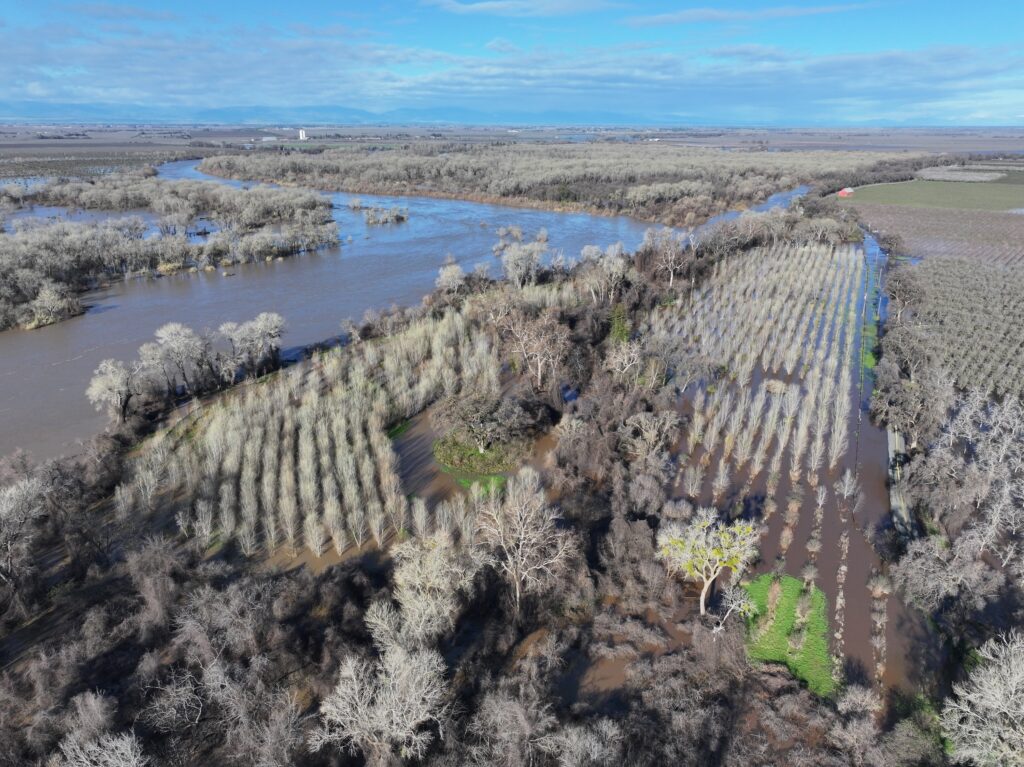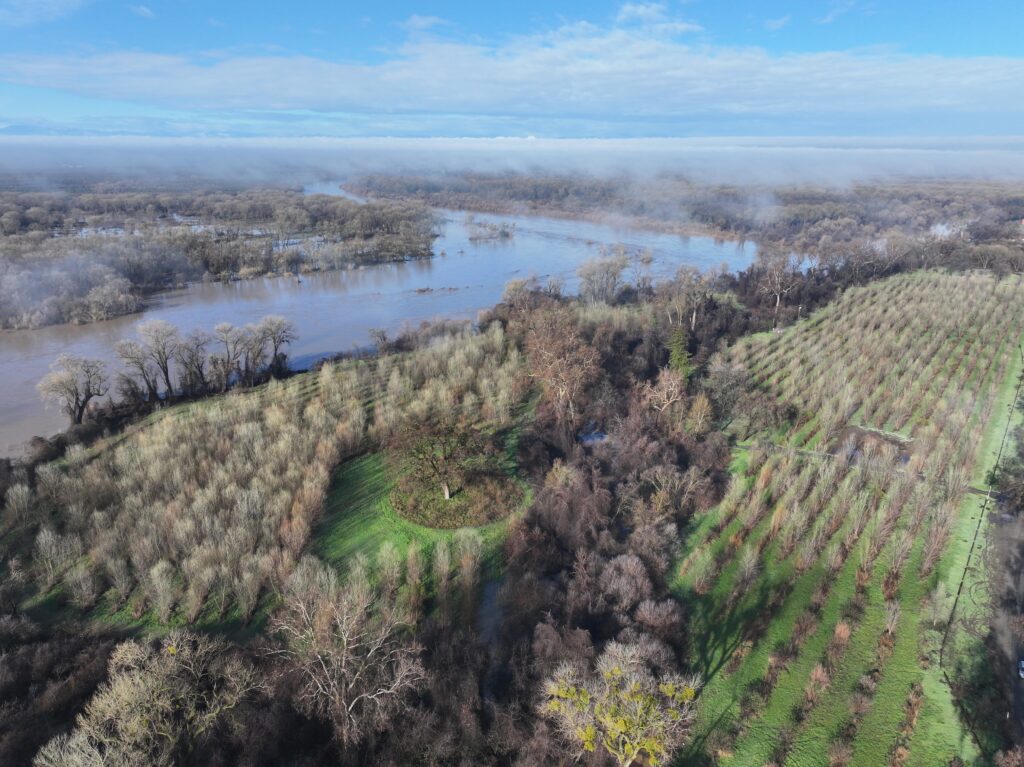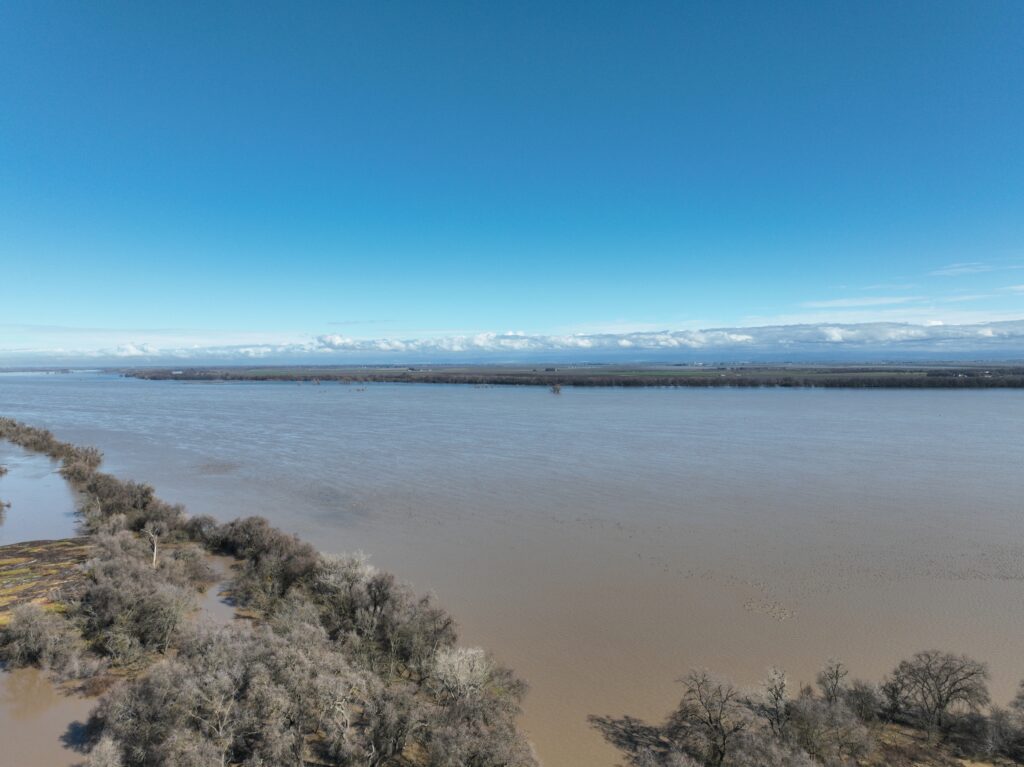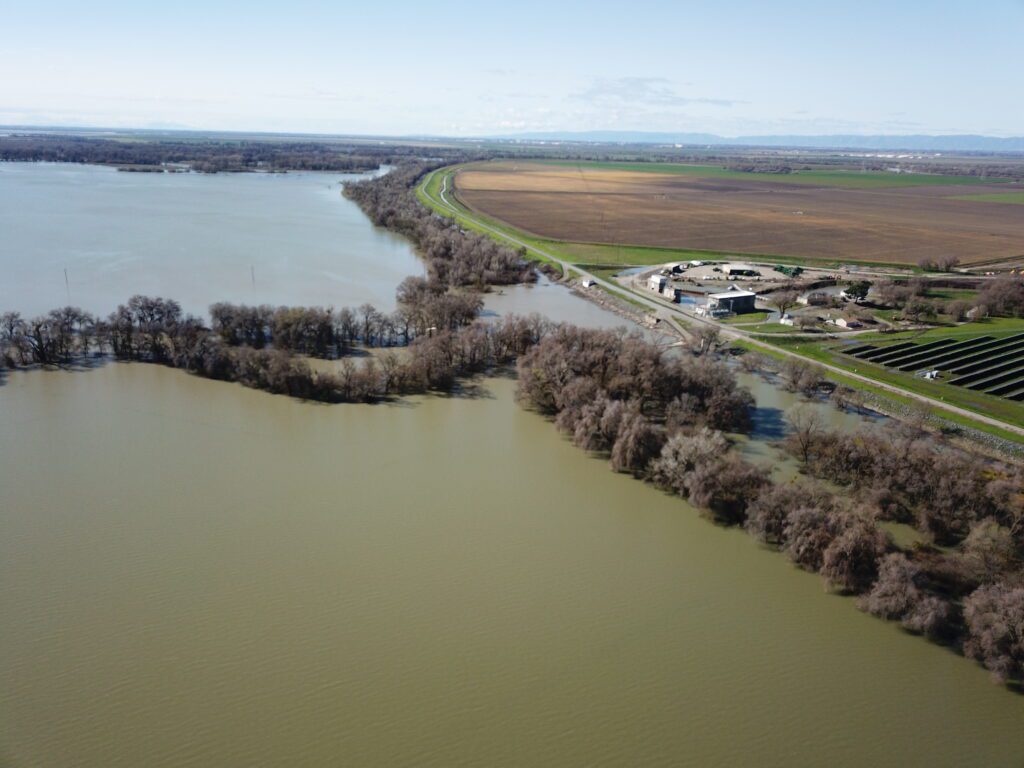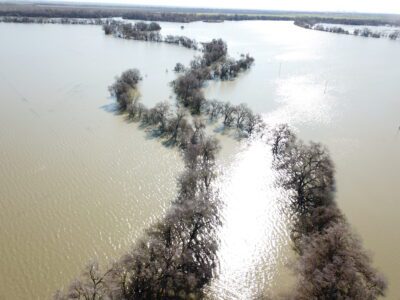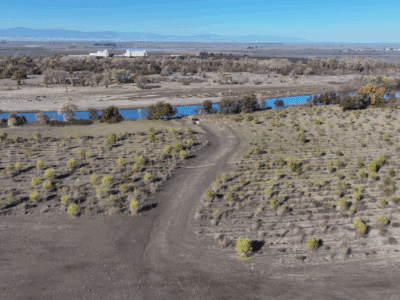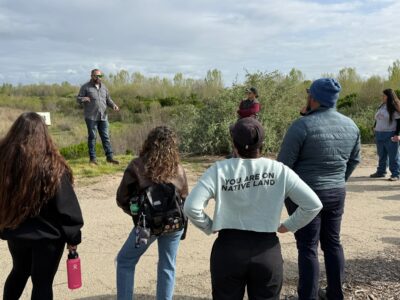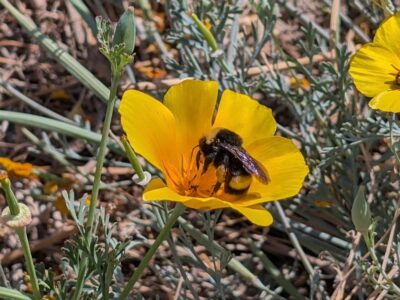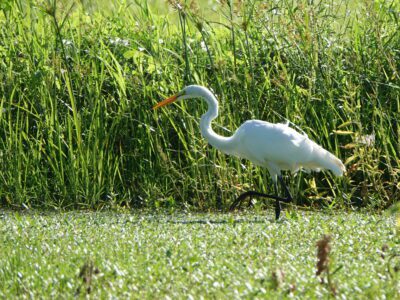With powerful storms battering California, the need for bold, nature-based flood solutions is clear. Our state is experiencing more extreme and frequent floods that put communities and our future in harm’s way, and our rivers already hold the key to resilience. By restoring native habitat along rivers and reconnecting historic floodplains, we create natural buffers that absorb floodwaters, reduce levee stress, and protect people—while also recharging groundwater and reviving vital wildlife habitat for endangered species like salmon.
This month, we saw those benefits in action. River Partners’ restored riverside forests successfully absorbed floodwaters, demonstrating how reconnected floodplains act as natural shock absorbers.
Scientists warn that California’s weather will become even more erratic in the coming years, with worsening cycles of flood and drought known as hydroclimate whiplash. California recently passed $10 billion-Proposition 4, and the Central Valley Flood Protection Plan among other state initiatives call for multi-billion-dollar investments in flood management, especially for large-scale floodplain restoration throughout the Central Valley and beyond. By investing in nature-based solutions, we can safeguard communities, water supplies, wildlife, and build a durable California for generations to come.
Check out these restored floodplains in action:
Hamilton City: Protecting a Flood-Prone Community
In Hamilton City near Chico, where residents have endured six flood-related evacuations in the past 30 years, the recently completed restoration of approximately 1,500 acres of native habitat between a new levee setback and the Sacramento River is helping keep residents safe—while also supporting the recovery of imperiled salmon and other struggling wildlife.
It’s the first effort of it’s kind in the nation combining flood-risk management with ecosystem restoration undertaken by the U.S. Army Corps of Engineers. River Partners restored habitat in the 6.8-mile levee setback along the Sacramento River—which safely absorbed floodwaters in early February after a series of winter storms. Levee setbacks combined with ecosystem restoration increase flood safety, boost levee stability, and allow rivers room to safely swell during storm events. The Hamilton City project was highlighted by the 99% Invisible podcast in their episode titled, “The Little Levee that Could.“
Bidwell-Sacramento River State Park: From Orchard to Thriving Native Habitat
At Bidwell-Sacramento River State Park near Chico, and just across the Sacramento River from Hamilton City, over 13,000 native trees and shrubs planted in early 2021 got their feet wet with floodwater for the first time recently. Formerly a walnut orchard, the native vegetation including western sycamore, Fremont cottonwood, valley oak, elderberry, and sandbar willow have deep root systems that improve soil permeability, encouraging water to sink in and recharge groundwater supplies.
Turning Point Preserve: Expanding the Constrained Sacramento River
Turning Point Preserve lies within a 30-mile stretch of the most constrained and habitat-poor section of the Sacramento River between Colusa and Sacramento. The to-be-launched restoration will include planting thousands of native trees, plants and grasses in two large floodplain areas totaling nearly 200 acres. In addition, defunct farming berms built along the edge of the property in the last century will be breached to directly reconnect the floodplain back to the Sacramento River, creating seasonal inundation and increasing beneficial salmon habitat. In February 2025, floodwaters spread across the property, offering insights into how restoration can optimize flood safety, wildlife, and community benefits.
Dos Rios Norte: Valley’s Largest River Confluence
While Dos Rios Norte floods regularly, it should not be mistaken for a fully functioning floodplain. Essential ecosystem processes and native vegetation are missing from the 1,500-acre property located 20 miles north of Sacramento. The unique site, which is currently being farmed, is where River Partners will soon restore 750 acres of native habitat. It is located at the largest river confluence in the Central Valley where the Sacramento River, Feather River, and lower Butte Creek converge. The site lies within the 6,000-acre Sutter Bypass which provides critical flood protection for hundreds of thousands of people and businesses by safely diverting floodwaters from Yuba City, Marysville, Colusa, and hundreds of thousands of acres of farmland. By restoring habitat complexity and hydrological connectivity, the property can provide improved habitat for critically-threatened Chinook salmon.
Vision of a Beautiful, Restored Central Valley
In these ephemeral moments when water spreads out across the landscape, it remind us what the Central Valley used to be, and what we work every day towards making it become again: a place where rivers thrive and support a healthy future for people and wildlife.


